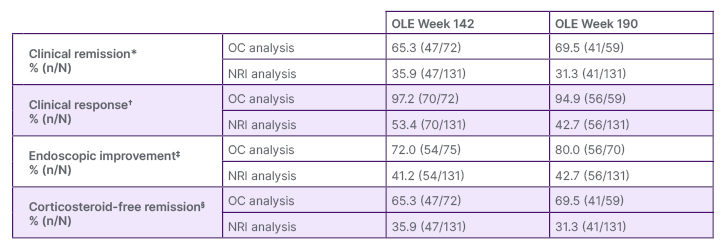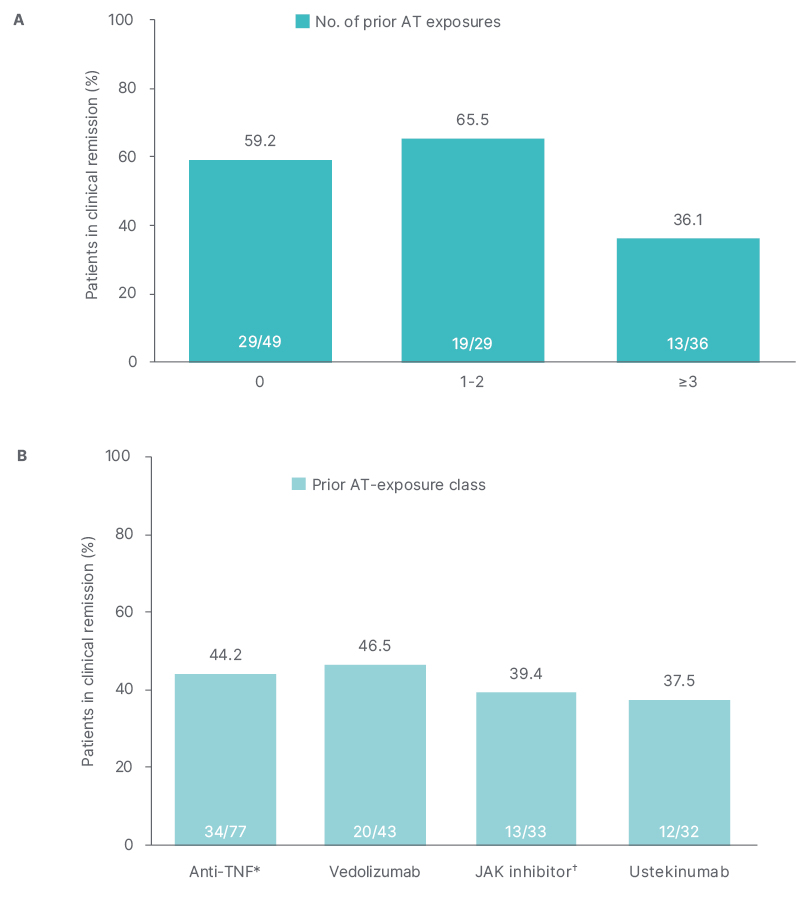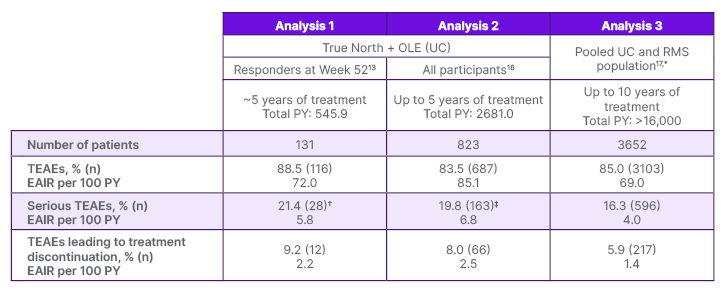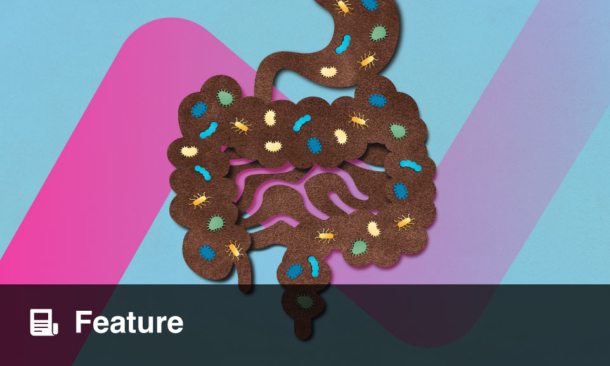Authors: James O. Lindsay,1 David T. Rubin,2 Nicholas Scalzo,3 Joana Torres4
1. Barts and the London School of Medicine and Dentistry, UK
2. Inflammatory Bowel Disease Center, University of Chicago Medicine, Illinois, USA
3. Icahn School of Medicine at Mount Sinai, New York, USA
4. Division of Gastroenterology, Hospital da Luz, Lisbon, Portugal
Disclosure: Lindsay has received consulting and/or speaker fees from AbbVie, Bristol Myers Squibb, Celgene, Celltrion, Eli Lilly, Engitix, Ferring, Galapagos, Gilead Sciences, GlaxoSmithKline, Janssen, MSD, Napp, Orchard Therapeutics, Pfizer, Shire, and Takeda; and investigator-led research grants from AbbVie, Gilead Sciences, and Takeda. Rubin has received consulting and/or speaker fees from AbbVie, AltruBio, Aslan Pharmaceuticals, Athos Therapeutics, Bellatrix Pharmaceuticals, Boehringer Ingelheim, Bristol Myers Squibb, Celgene, Chronicles, ClostraBio, Connect BioPharma, EcoR1, Eli Lilly, Genentech/Roche, Gilead Sciences, Iterative Health, Janssen, Kaleido Biosciences, Pfizer, Prometheus Biosciences, Reistone, Seres Therapeutics, Syneos, Takeda, Target RWE, and Trellus Health; and grant/research support from Takeda. Nicholas Scalzo reported no conflicts of interest. Torres has received consulting and/or speaker fees from AbbVie, Bristol Myers Squibb, Janssen, Pfizer, and Sandoz; and grants from Abbvie and Janssen.
Acknowledgements: Writing assistance was provided by Nicola Humphry, Nottingham, UK
Disclaimer: The opinions expressed in this article belong solely to the authors of the posters.
Ozanimod▼ is indicated for the treatment of adult patients with relapsing remitting multiple sclerosis (RRMS) with active disease as defined by clinical or imaging features, and for the treatment of adult patients with moderately to severely active ulcerative colitis who have had an inadequate response, lost response, or were intolerant to either conventional therapy or a biologic agent.
Ozanimod® is subject to additional monitoring. This will allow quick identification of new safety information.
Prescribing information for HCPs in the UK can be found here.
Prescribing information for HCPs in Ireland can be found here.
Adverse events should be reported. Reporting forms and information can be found via: Great Britain & Northern Ireland – The Yellow Card Scheme at: www.mhra.gov.uk/yellowcard or search for MHRA Yellow Card in the Google Play or Apple App store; Ireland – HPRA Pharmacovigilance at www.hpra.ie
Adverse events should also be reported to Bristol-Myers Squibb via [email protected] or 08007311736 (Great Britain & Northern Ireland); 1 800 749 749 (Ireland).
Support: The publication of this article was funded by Bristol Myers Squibb.
Citation: EMJ. 2025;10[1]:16-25. https://doi.org/10.33590/emj/LDHY2142
Keywords: Long-term safety, ozanimod, real-world evidence, S1P receptor modulator, True North, ulcerative colitis.
![]()
Meeting Summary
Ozanimod is an oral medication indicated for the treatment of moderately-to-severely active ulcerative colitis (UC) in adults. This review article summarises the latest data on the long-term efficacy and safety of ozanimod in patients with UC, presented at the United European Gastroenterology Week (UEGW) held in Vienna, Austria, between 12th–15th October 2024 and the American College of Gastroenterology’s (ACG) Annual Scientific Meeting held in Philadelphia, Pennsylvania, USA, between 25th–30th October 2024. Updated analyses of the True North study (which met its primary endpoint) and associated ongoing open label extension (OLE) study demonstrated that ozanimod efficacy and generally well tolerated safety profile were durable over 5 years of continuous treatment. In a real-world setting, ozanimod induced a clinical response in both advanced therapy (AT)-naïve and AT-experienced patients, though remission rates were slightly lower in patients with prior exposure to ≥3 ATs. In addition, an evaluation of long-term exposure to ozanimod over 16,000 patient years (PY), in a pooled analysis of clinical studies in moderately-to-severely active UC or relapsing multiple sclerosis (RMS), showed that incidence rates for the most frequent treatment-emergent adverse events (TEAE) and TEAEs of interest were low and were similar across both patient populations. Together, these new data confirm that the ongoing efficacy and safety profile of ozanimod is consistent with previous analyses.Introduction
Ozanimod is a first-in-class, oral, sphingosine 1-phosphate (S1P) receptor modulator approved in several countries for the treatment of moderately-to-severely active UC in adults.1-3 It is also approved for use in adults with RMS.1,2 Ozanimod is highly selective for S1P receptors 1 and 5. It does not modulate S1P receptors 3 and 4, which are possibly associated with the safety risks observed with the use of less selective S1P receptor modulators.1,4-7
In the Phase 3 True North study (NCT02435992), ozanimod 0.92 mg/d was efficacious (met the primary endpoint of percentage of patients with clinical remission) and generally well tolerated for up to 52 weeks in patients with moderately-to-severely active UC.8 In a post hoc analysis, a higher proportion of ozanimod-treated patients achieved clinical remission and clinical response at Weeks 10 and 52 than those treated with placebo, regardless of prior biologic exposure.9
The ongoing open-label extension (OLE) study (NCT02531126) of ozanimod 0.92 mg/d in UC comprises a heterogenous patient population; patients could enter after True North Week 10 if they did not achieve a clinical response by this time, after completion of True North Week 52, or during the True North maintenance period if they experienced disease relapse.8,10 Previous interim analyses of True North OLE have reported long-term efficacy and safety after ~3 years and ~4 years of continuous treatment.10-12
This review article focuses on four new key data pieces presented at UEGW and ACG 2024 that further strengthen the efficacy and safety profile of ozanimod in patients with UC.
Updated Data on The Efficacy of Ozanimod in Adults with Ulcerative Colitis
Efficacy of Ozanimod Over ~5 Years Among Ozanimod Responders at Week 52
James Lindsay, Professor of Inflammatory Bowel Disease at Barts and the London School of Medicine and Dentistry, Queen Mary University of London, and a Consultant Gastroenterologist at Barts Health NHS Trust, UK, presented data on the efficacyand safety of ~5 years of continuous ozanimod treatment from an interim analysis of the True North OLE.13
This analysis included patients who were treated with ozanimod in the True North induction and maintenance periods, completed maintenance, achieved clinical response at Week 52 of continuous treatment with ozanimod 0.92 mg/d, entered the True North OLE, and completed Week 190 or discontinued by the data cutoff (10 January 2024). The patients in this population had therefore each received continuous ozanimod 0.92 mg/d for up to 242 weeks (~5 years).13
Efficacy was evaluated using the modified Mayo score for UC disease activity and individual subscores of Mayo score as follows:13
Symptomatic response
Decrease from baseline in the combined 6-point rectal bleeding subscore + stool frequency subscore of ≥1 point and ≥30% and a decrease of ≥1 point in rectal bleeding subscore or an absolute rectal bleeding subscore of ≤1 point.
Symptomatic remission
Rectal bleeding subscore 0 and stool frequency subscore ≤1 (and a decrease of ≥1 point from the baseline stool frequency subscore).
Partial Mayo score
Sum of rectal bleeding subscore, stool frequency subscore, and Physician Global Assessment subscore.
Clinical remission
Rectal bleeding subscore 0, stool frequency subscore ≤1 (and a decrease of ≥1 point from the baseline stool frequency subscore), and Mayo endoscopy subscore ≤1.
Clinical response
Reduction from baseline in the 3-component Mayo score (sum of the rectal bleeding subscore, stool frequency subscore, and Mayo endoscopy subscore) of ≥2 points and ≥35% reduction from baseline in the rectal bleeding subscore of ≥1 point or an absolute rectal bleeding subscore of ≤1 point.
Endoscopic improvement
Mayo endoscopy subscore ≤1 without friability.
Corticosteroid-free remission
Clinical remission while off corticosteroids for ≥12 weeks.
Endoscopic remission
Mayo endoscopy subscore 0.
A total of 131 patients entered the True North OLE following a clinical response at Week 52 of True North. The mean age was 44.3 years (standard deviation [SD]: 13.6), and 51.9% were female.13 At data cutoff for this analysis, 75/131 patients (57.3%) had completed OLE Week 190; the most common reasons for discontinuation are described in the safety section of this article.13
Overall, symptomatic response and symptomatic remission were maintained over the next ~4 years in the OLE in the vast majority of patients (a total of ~5 years of continuous ozanimod 0.92 mg/d): 98.4% and 85.7%, respectively, at Week 190 in the observed case (OC) analysis (47.3% and 41.2%, respectively, in the non-responder imputation [NRI] analysis)13 Reductions in mean partial Mayo score were sustained through to OLE Week 190; mean partial Mayo score was 6.2 at True North baseline and 0.9 at OLE Week 190.13
Patients who achieved a clinical response after 1 year of ozanimod 0.92 mg/d treatment in True North continued to have a clinical response over the next ~4 years in the True North OLE (Table 1).13 Clinical remission, endoscopic improvement, and corticosteroid-free remission were also achieved and maintained (Table 1).13 Nearly 40% of patients entered the OLE in endoscopic remission; at OLE Week 142, 22.9% were in remission, and at OLE Week 190 25.2% were in remission.13

Table 1: Ozanimod efficacy at True North Open Label Extension Weeks 142 and 190, after ~5 years of continuous ozanimod 0.92 mg/d.13
*RBS 0, SFS ≤1 (and ≥1-point decrease from baseline SFS), and MES ≤1.
†≥2-point and ≥35% decrease from baseline in the 3-component Mayo score (sum of RBS, SFS, and MES) and ≥1-point decrease from baseline RBS or absolute RBS of ≤1.
‡MES ≤1.
§Clinical remission while off CS for ≥12 weeks.
MES: Mayo endoscopy subscore; NRI: non-responder imputation; OC: observed case; OLE: open label extension; RBS: rectal bleeding subscore; SFS: stool frequency subscore.
Lindsay et al.13 concluded that ozanimod efficacy was sustained over ~5 years of continuous treatment in True North and the True North OLE, suggesting that ozanimod continues to be a durable therapy for patients with moderately-to-severely active UC for up to 5 years of continuous treatment.13
Real-World Effectiveness of Ozanimod
Results from the True North OLE are positive, yet it is important to determine the effectiveness of ozanimod in real-world patient populations since response to treatment may vary based on prior exposure to AT (patients were excluded from the True North study if they had not responded to induction therapy with ≥2 biologic agents approved for the treatment of UC).8,14
Nicholas Scalzo, a Gastroenterologist at The Mount Sinai Hospital, New York, USA, presented efficacy data from a retrospective study of the multi-centre REBOOT-IBD consortium, a real-world population that includes patients from 10 tertiary centres in the USA.15
The study included adult patients with UC who were newly initiated on ozanimod and had at least one follow-up. The primary outcome was the proportion of patients who achieved clinical remission at 12 weeks; results were stratified by prior AT exposure and prior AT class. Clinical remission was defined as a partial Mayo score <2, and AT was defined as the use of anti-TNF agents, JAK inhibitors, vedolizumab, and/or ustekinumab.15
A total of 146 patients were included in this analysis, of which 60.3% (n=88) were male. The median age (interquartile range [IQR]) at UC diagnosis was 29.0 (19.0–37.0) years.15 Extent of UC disease at baseline was distributed across pancolitis (54.1%), left-sided colitis (28.8%), and proctitis (10.3%). At ozanimod initiation, 55.5% (n=81) of patients had prior exposure to AT.15
Ozanimod was similarly effective at inducing clinical remission in AT-naive patients and patients with 1–2 prior exposures to AT (Figure 1); however, remission rates were numerically lower in patients who had ≥3 exposures to AT.15 Rates of clinical remission at Week 12 were similar across patients exposed to different classes of AT.15

Figure 1: Clinical remission results at Week 12 by A) prior advanced therapy exposures and B) prior advanced therapy-exposure class.15
*Anti-TNFs included in the analysis were infliximab, adalimumab, and golimumab.
†JAK inhibitors included in the analysis were tofacitinib and upadacitinib.
AT: advanced therapy; JAK: Janus kinase; TNF: tumour necrosis factor.
Scalzo et al.15 concluded that ozanimod was effective at inducing clinical remission in AT-naive and AT-experienced patients with UC in real-world settings.15
Long-Term Safety of Ozanimod: Updated Data
Three study analyses were presented that further strengthened data for the long-term safety of ozanimod; data from these analyses are summarised in Table 2. All analyses included the presentation of exposure-adjusted incidence rate (EAIR) per 100 person-years (PY) for AEs; this is a way to measure the number of patients experiencing an AE relative to their exposure time to a study drug. It is calculated by dividing the number of patients who experienced an event by the sum of their number of years on the study (total exposure to the study drug), then multiplying by 100.

Table 2: Summary of long-term safety data for ozanimod 0.92 mg/d presented at United European Gastroenterology Week 2024 and the American College of Gastroenterology 2024.
*Pooled population of patients with UC or RMS treated with ozanimod 0.92 mg/d in True North + OLE, TOUCHSTONE + OLE, and DAYBREAK OLE studies.
†Serious TEAEs occurring in >1 patient with ozanimod treatment included anaemia (n=2, 1.5%), COVID-19 pneumonia (n=3, 2.3%), and appendicitis (n=2, 1.5%).
‡For the five patients who newly reported a serious TEAE with an additional year of exposure, events included one patient each with UC exacerbation, colitis, pancreatitis, and umbilical hernia, and one patient with both ulcerative keratitis and keratouveitis.
EAIR: exposure-adjusted incidence rate; RMS: relapsing multiple sclerosis; OLE: open-label extension; PY: patient-years; TEAE: treatment-emergent adverse event; UC: ulcerative colitis.
Safety of Continuous Ozanimod Over ~5 Years Among Ozanimod Responders at Week 52
Lindsay et al.13 reported data on the safety of ~5 years of continuous ozanimod treatment from the interim analysis of the True North OLE.13 This safety analysis included patients who were treated with ozanimod in True North, achieved clinical response at Week 52, and completed Week 190 or discontinued by the data cutoff (10 January 2024; n=131). All these patients had, therefore, received continuous ozanimod 0.92 mg/d for up to 242 weeks (~5 years).13
A total of 75 out of 131 patients (57.3%) completed OLE Week 190; the most common reasons for discontinuation up to this point included withdrawal by patient (n=19 [14.5%]) and lack of efficacy (n=15 [11.5%]).13
Among ozanimod responders at Week 52, the TEAEs and serious TEAE EAIRs after ~5 years of continuous treatment are shown in Table 2: Analysis 1. With an additional year of follow-up in the OLE, EAIRs remained similar to those reported after ~4 years of treatment.12,13 There were no new discontinuations due to TEAEs in this population after an additional year of ozanimod exposure in the OLE.13
No new cases of bradycardia, third-degree atrioventricular (AV) block, infection (including serious infection and herpes zoster), macular oedema, or malignancy, and no cases of progressive multifocal leukoencephalopathy were observed.13
Since the previous follow-up at ~4 years of continuous ozanimod 0.92 mg/d, three more patients experienced reductions in absolute lymphocyte count (ALC) to <500 cells/μL, but no new patients had ALC <200 cells/μL. ALC <200 cells/µL was noted in 8/131 patients (6.1%) at the previous data cut-off of 30 June 2023, and this observation continued in the current analysis; however, none of these patients developed serious or opportunistic infections during the OLE study.13
Serious hepatic events were not observed, and clinically relevant elevations in hepatic enzymes occurred infrequently, with no new alanine aminotransferase (ALT) or aspartate aminotransferase (AST) elevations ≥3 times the upper limit of normal with an additional year of follow-up in the OLE study.13
Lindsay et al.13 reported that ozanimod was generally well tolerated over ~5 years of continuous treatment, reflective of its high selectivity for S1P receptors 1 and 5.13
Overall Safety Data From the True North OLE Study
Joana Torres, a Gastroenterologist at the Hospital da Luz, Lisbon, Portugal, presented safety data from the broader study population, including all patients who entered the OLE from True North (clinical non-responders at Week 10, those who lost response during maintenance, and those who completed maintenance at Week 52). An interim analysis of data was performed to assess the overall cumulative safety of long-term ozanimod treatment up to 5 years in patients with moderately-to-severely active UC.16
A total of 823 participants were included in this analysis. TEAEs were monitored from the first dose of ozanimod in True North or the OLE through to data cutoff (10 January 2024), and EAIRs per 100 patient-years (PY) were presented. Lab abnormalities, including ALC reductions, were assessed during the OLE through to data cutoff.16
At data cutoff, 354/823 (43.0%) patients had completed OLE Week 190. The most common primary reasons for discontinuation were lack of efficacy (23.3% [192/823]) or patient withdrawal (16.9% [139/823]). Total ozanimod exposure in the analysis population was 2681 PY.16 The mean age was 41.7 years (SD: 13.6), and 59.3% of patients were male. Approximately two-thirds of patients (62.2%) had left-sided UC disease (the remainder had extensive UC), and roughly one-third (33.9%) had prior anti-TNF treatment. The mean total Mayo score at True North baseline was 8.9 (SD: 1.4), and at entry to the OLE it was 6.3 (SD: 3.4).16
Overall, the cumulative safety assessments did not change substantially with an additional year of ozanimod exposure (Table 2: Analysis 2). EAIRs of TEAEs, serious TEAEs, and TEAEs leading to treatment discontinuation remained consistent, and there were no new cases of COVID-19, malignancy, bradycardia, third-degree AV block, myocardial ischaemia, ischaemic stroke, pulmonary embolism, deep vein thrombosis, or macular oedema with an additional year of ozanimod exposure.16
Most TEAEs of interest did not change with an additional year of ozanimod exposure. However, during this year, three patients developed an infection, and one patient developed a serious infection (keratouveitis).17
Reductions in ALC <500 cells/µL were common (57.2%). A small number of patients had ALC <200 cells/µL (6.6%), but this was not temporally associated with serious or opportunistic infections.16
No Hy’s law cases (indicative of serious hepatic injury) or serious hepatic events occurred. Most ALT and AST elevations were transient and resolved without treatment interruption.16
Torres concluded that, at OLE Week 190, when patients had received up to 5 years of ozanimod treatment, 43% of patients remained on treatment and the rate of discontinuation due to AEs was low. Long-term ozanimod use, representing 2681 PY of exposure, continues to be generally well tolerated in patients with moderately-to-severely active UC.16
In a discussion session following her presentation, Torres added that there are limited data for the safety of ozanimod in pregnant women; however, studies in animals have suggested reproductive toxicity, and ozanimod is therefore contraindicated in pregnancy.1,2 Torres noted that although ozanimod is associated with a drop in ALC,16 it does not appear to affect innate immunity (e.g., natural killer cells and monocytes)(Torres, personal communication).
Expressing her own views, Torres opined that for monitoring purposes, blood tests should be conducted in patients receiving ozanimod in a similar way to patients with UC on any advanced treatment, including interrupting treatment if a patient’s lymphocyte count falls below 200×109/mL, periodically monitoring liver enzymes, and regularly checking blood pressure.1,2 Torres suggested that there may be the potential to reduce the frequency of testing from 3 months to 4–6 months after the first year in patients on long-term treatment who are tolerating ozanimod well, but that more real-world experience is needed (Torres, personal communication).
Integrated Long-Term Safety Across Ulcerative Colitis and Relapsing Multiple Sclerosis
Ozanimod is approved for use in RMS in addition to moderately-to-severely active UC.1,2 This means there are considerable data on the safety of ozanimod in adults if treatment across these two conditions is considered together.
David T. Rubin, Chief of Gastroenterology, Hepatology, and Nutrition at the University of Chicago Medicine, and Director of the Inflammatory Bowel Disease Center, Chicago, USA, presented the results of a pooled safety analysis of ozanimod in patients with moderately-to-severely active UC or RMS.18
The pooled UC population included patients treated with ozanimod 0.92 mg from the Phase II TOUCHSTONE study and the Phase III True North study, and their respective OLEs (N=1,158).18 The RMS population included patients treated with ozanimod 0.92 mg in the Phase III DAYBREAK OLE study after enrolling from Phase I–III parent studies (N=2,494). Data in patients with UC were examined from 2nd December 2015–17th November 2023, and data in patients with RMS were examined from 16th October 2015–5th January 2023.18
Overall, this pooled analysis included 3,652 patients. The mean (SD) age was 37.8 (11.0) years, 58.5% were female, and the majority (n=96.1%) were White. The pooled UC + RMS population had >16,000 PY of total ozanimod exposure, a mean (SD) of 4.4 (2.1) years of exposure per patient, and a maximum of 10 years of exposure (median [range] was 5.5 [0–10.1]).18
A total of 1,529/3,652 (41.9%) of patients discontinued ozanimod treatment overall. The main reasons for discontinuation were lack of efficacy (8.4%) and withdrawal by patient (13.1%).18
Incidence rates for the most frequent TEAEs and TEAEs of interest, including infections, malignancies, cardiovascular disorders, and macular oedema, were low (Table 2: Analysis 3) and were similar across the UC and RMS populations. Rates of TEAEs leading to study drug discontinuation and/or study withdrawal were also low (Table 2: Analysis 3).18
In line with data reported from the True North OLE,16 most ALT and AST elevations in this analysis were transient and resolved without treatment interruption; no serious hepatic events occurred, and there were no Hy’s law cases.18
Across the pooled population, there were five deaths (0.4%) in patients with UC and 15 deaths (0.6%) in patients with RMS. In the UC population, there was one death each attributed to COVID-19; mucinous adenocarcinoma of unknown origin; pneumonia influenza and acute respiratory distress syndrome (in a patient with a history of chronic obstructive pulmonary disease, bilateral pulmonary nodules, ischaemic cardiomyopathy, and prolonged tobacco use); sudden death in a male patient with a history of heart failure and hypertension in the presence of acute dehydration due to UC; and adenocarcinoma of pancreas in a female former cigarette smoker.
In the RMS population, there were two deaths each attributed to malignancy-related (bladder cancer and disseminated cancer with unknown primary focus); accidents (fatal motorbike accident and multiple craniocerebral injuries); and pulmonary embolism. One death was each attributed to abscess of the right lung; COVID-19; COVID-19 bilateral pneumonia; COVID-19 infection; COVID-19 pneumonia; heart failure; intracerebral haemorrhage; pneumonia; and sudden death. Two additional deaths were reported after the required safety follow-up period due to malignancies (metastatic pancreatic carcinoma and glioblastoma).18
Rubin et al.18 concluded that the rates of most TEAEs of interest, including malignancies, cardiovascular disorders, and macular oedema, were low and similar across the UC and RMS populations. The rates of overall TEAEs and some individual TEAEs (e.g., lymphocyte decreases, liver enzyme elevations, anaemia, arthralgia) were higher in the UC population, whereas rates of some infection TEAEs were higher in the RMS population, suggesting that the occurrence of some AEs may be driven by the patient population or disease state rather than ozanimod treatment. Overall, these data demonstrate that ozanimod is generally well tolerated with >16,000 PY of exposure and up to 10 years of follow-up in moderately-to-severely active UC or RMS.18
Key takeaways from these three safety analyses are that ozanimod continues to be generally well tolerated after ~5 years of treatment in UC, including among those patients who responded to ozanimod after the first year and received continuous ozanimod for a further 4 years. Rates of most TEAEs of interest were low and were similar in the moderately-to-severely active UC and RMS population.
| Adverse events should be reported. Reporting forms and information can be found via:
Great Britain & Northern Ireland – The Yellow Card Scheme at: www.mhra.gov.uk/yellowcard or search for MHRA Yellow Card in the Google Play or Apple App store; Ireland – HPRA Pharmacovigilance at www.hpra.ie Adverse events should also be reported to Bristol-Myers Squibb via [email protected] or 08007311736 (Great Britain & Northern Ireland); 1 800 749 749 (Ireland). |
Job Code: IMM-GB-2400293
Date of Prep: Jan 2025







